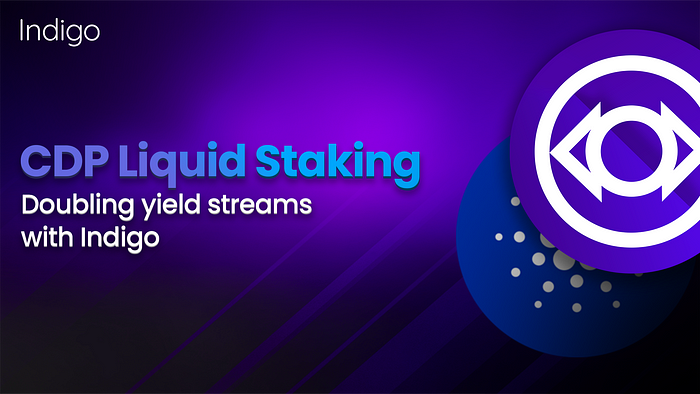Doubling yield streams with Indigo Protocol

Collateralized Debt Position (CDP) Liquid Staking is a unique feature only possible on Cardano that allows a wallet to receive ADA staking rewards while the delegated ADA is simultaneously used elsewhere. In Indigo’s case, this involves ADA that is used as collateral to mint iAssets, such as $iUSD, and the use of the minted iAsset elsewhere. CDP Liquid Staking makes possible an additional yield stream for users who keep their ADA delegated for staking — thereby earning staking rewards by providing a service to the Cardano Network and its consensus mechanism — while simultaneously making that same ADA usable in broader DeFi strategies.
To understand Indigo’s CDP Liquid Staking model, we must first explain how Cardano utilizes different keys within a wallet for various purposes. When creating a new wallet, for example using Nami, you are setting up two keys with your wallet: a payment key and a staking key.
These keys are then used to derive your wallet address. Addresses in Cardano are split into three parts: a network id, a payment address, and a staking address. The payment address is used to designate which wallet or smart contract has access to spend the funds. The staking address is used to designate who should receive ADA staking rewards from the Cardano Network for the funds locked at that address.
You can see an example address below:
Indigo utilizes this particular feature when opening a CDP by sending the funds to the CDP contract but applying the user’s staking address to those funds. This means that the CDP contract has control of the constraints in which the CDP funds can be spent while allowing the user to accrue ADA staking rewards from the ADA locked in their CDP.
This feature is unique to Cardano and brings another layer of utility to the ADA token which Indigo has implemented in its protocol design. The Indigo Web App automatically attaches a wallet’s public staking key when opening a CDP in Indigo. All ADA deposited into that CDP will continue to earn staking rewards from the stake pool that the wallet is delegated to; ADA staking rewards will flow to the wallet as if the ADA never left the wallet. If the user delegates their wallet to a new stake pool after creating the CDP, the CDP will automatically earn rewards from the new stake pool during the next epoch, offering the same seamless transition in delegation rights that the Cardano Network already offers. It’s important to note that the ADA rewards earned from CDP Liquid Staking are not added to the balance of the CDP but show up in the wallet as usual.
Indigo’s CDP Liquid Staking improves capital efficiency and lets a user’s ADA have multiple reward capabilities — rewards earned from Cardano from staking, and rewards earned from iAssets put to use within Indigo or other DeFi protocols. CDP Liquid Staking is a unique capability offered by Indigo that we believe will help attract liquidity from both inside and outside of the Cardano ecosystem and help bring iAssets to a wider audience.
Have any experience with CDP Liquid Staking using Indigo? Please share how it went and any thoughts you have for improvement on the Indigo Protocol Discord channel.
Website | Discord | Telegram | Twitter | Indigo Paper
DISCLAIMER: This article is provided for educational purposes only and is NOT investment advice. Any use of decentralized finance, including the Indigo Protocol, involves various significant financial risks, including, but not limited to, financial loss while digital assets are being transferred and financial loss due to the fluctuation of prices of tokens, collateral, or assets underlying any synthetic asset.
